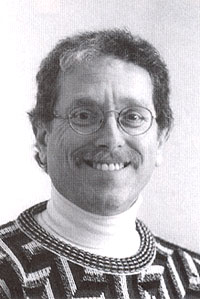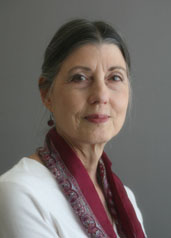Guilt, Anger and the Human Condition
By Sam Menahem
Originally printed in the MARCH-APRIL 2007 issue of Quest magazine.
Citation: Menahem, Sam. "Guilt, Anger and the Human Condition." Quest 95.2 (MARCH-APRIL 2007): 65-67.

If you answered "yes" to any of these questions, read on. If you answered "no" to all of them, you are either a very happy person or you are in denial. It is likely that you are in denial, but please read on anyway; you may discover some inner guilt. After all, most guilt is unconscious. It is often just too painful to feel the brunt of our guilt.
Psychologists since the time of Sigmund Freud have been trying to educate us about the ways in which we protect ourselves from feeling the pain of guilt. The number one defense mechanism is denial. Young children often deny doing things they just did right in front of adults. Even when confronted, they deny it. Only with maturity do people begin to admit what they have done. With even greater maturity, they learn to accept the consequences of what they have done. This does not usually occur until adolescence, often later, and sometimes never.
There are those who never admit responsibility for anything. Schizophrenics, criminals, alcohol and drug abusers, and narcissists all deny responsibility for their actions. The fear of the consequences of their actions is too great. To feel guilty is to think you did something wrong. In a court of law, guilt requires punishment. Life is like a court of law. If you believe you are guilty, you will find some way to get punished for it. Most of the time the punishment comes in the form of other people or life in general, giving you problems, situations, and feelings you do not want.
If you are completely unaware of your own guilt and need for punishment, you will see no connection to it when the troubling person or situation gives you a hard time. For example, you may be harshly criticized by a spouse or boss, and react with righteous indignation or anger: "How dare he attack me? I didn't do anything wrong. I am angry and going to stay angry until he apologizes."
You may rant and rave, or turn it inward and get depressed, or develop a physical condition like a headache, stomachache or worse. You may also develop anxiety out of fear of retribution for the retaliatory anger. It is a vicious circle. The tragedy of it all is that neither party realizes that the whole conflict has to do with unconscious guilt and self-hate. The one who is more aware of the guilt, sometimes called a depressive, victim, loser, or schlemiel seems to attract other people with unconscious guilt. These people are so unaware of their guilt that they unconsciously project it outward onto someone else. The angry person proclaims: "It isn't my fault, it is your fault."
This is projection, an attempt to remain unaware of guilt and self-hate. The ball is now in the depressive's court. The depressive might respond by counter-attacking, becoming more depressed, or getting sicker in some way. The vicious circle may spiral out of control, with all parties feeling misunderstood, victimized and unhappy.
This is the dynamic behind all human conflict. It leads to the entire range of human misery, depression, anxiety, divorce, illness, and, on a global scale, war. All of it is caused by one simple human emotion—Guilt!
Guilt is an emotional discomfort that arises when we feel we have not lived up to some responsibility or that we have done something wrong. It does not mean we actually did something wrong; we just have to think we did something wrong. This is an important distinction. To paraphrase the great philosopher Rene Descartes; I think I did something wrong—therefore I did do something wrong—and I am guilty! But why do so many, if not all, of us think we have done something wrong in the first place? There are two levels to be explored, the psychological and the spiritual.
Psychological guilt develops as we adapt to the physical world after we are born. Psychologists call this process, "separation-individuation." This term means that in order to survive in the physical world, we need to gradually realize that we are separate individuals. We need to identify with our bodies, realize we are physically separate from mother, and learn how to deal with and cope with all the other seemingly separate individuals in this world of, as William James says in Principles of Psychology, "blooming, buzzing confusion."
Under ideal conditions, our caretakers show us warmth, love and compassion. They guide us through all the difficulties of toddler-hood and early childhood. They give us appropriate limits at each age and enforce the rules consistently. They never use guilt or fear to control us. We grow up to be happy, healthy, young adults with high self esteem and great caring for others.
Those of you who were raised this way are lucky indeed. As for the rest of us, we were raised by immature and inconsistent parents who had plenty of their own insecurities and issues. They tried their best, but were often overwhelmed by the process of making a living and raising a family. Although they tried to love us and set limits, they did so inconsistently. In coping with alcohol or drug related problems, they may have used fear and guilt to control us just as their parents did with them. They just did not know any better. And sometimes, parents might have treated us with outright abuse or neglect.
The result is that we were traumatized. Each time we were yelled at, hit, or told that we were not good enough, we took it to heart. It is the nature of children to think the world revolves around them. If they are being mistreated, they believe they deserve it.
Guilt may be described in this parody of the introduction to the old 1950s TV show, Superman. More powerful than a locomotive! Able to destroy whole populations like an epidemic. Look! Out in the world, it's Super-Guilt! Yes, Guilt; strange emotion from another planet with power and ability to destroy mortal humans. Guilt, destroying all who feel it or deny it, disguised in everyone as they suffer with fear, anger, and the physical way.
Seriously, it is almost impossible to grow up without trauma, guilt, and fear. Parenting is a very difficult job; however, many parents are in denial when it comes to thinking that they might lack parenting skills. Consequently, their kids feel guilty because the parents indirectly tell them they are guilty. Parental blaming, plus the normal narcissistic nature of childhood equals a very guilty populace.
Am I blaming the parents? Actually, no; this is just the way it is. And human life is difficult because of the way it is set up. Most of us grow up in the competitive world of school and work, trying to prove that we are good enough, while feeling inside that we are not.
Guilt is the Human Condition. Now, this is much too painful for most of us to bear. We tend to deny our guilt; pretend it does not exist, and blame someone else. We do this by using the defense mechanisms of denial and projection mentioned previously.
At this point, I must add in the granddaddy of all defenses: Repression. This is the automatic pushing of pain into the unconscious. We can be very guilty without realizing it. All of this inner guilt and turmoil results in fear, hate, and conflict in the outer world. Guilt is the source of all human conflict. While I have outlined the psychological reasons for guilt, which are important, they do not go deep enough. We must also explore the spiritual basis for guilt.
The spiritual basis for guilt is a feeling of separation from our Source, God, or the Infinite. Our materialistic western culture would have us believe that we are nothing but biological creatures, with an ego to guide us through life, after which we are obliterated. This is the paradigm of life we are taught in the American school system. This is often taught side by side with some religious teaching which mentions a God who is basically loving and powerful, but is also judgmental. Since God knows all about us, we are punished if we are bad. If guilt is the root of all suffering, and there is some spiritual basis for guilt, let us root it out and heal it. The point is that this feeling of separation from God causes all suffering.
Therefore, healing the split with God is the central task for healing each person's pain. Indeed, it is the central task for healing the persistent conflict among individuals and nations. In order to accomplish this, we must stop projecting God as a separate being who is punishing us for our guilt, as our parents do on the psychological level. The ultimate answer for humanity is to wake up and realize that, on the spiritual level, we are one with God. That is to say, we are emanations of all that is—our Source—God. God's nature is love, peace, and power. Thus, our nature is also love, peace, and power. But, since we are alienated and think we are separate from God, we feel guilt, fear, and anger on a regular basis.
The first step in eliminating guilt is to admit our underlying guilt to begin healing our emotions. Secondly, we must heal our relationship with God, developing our spirituality. Spiritual-psychotherapy can help. It involves releasing our feelings of separation from others and from God. In other words, true forgiveness. Meditation and prayer are invaluable tools in this process. They help us to promote spiritual values. We need to learn to release the negative emotions and negative beliefs caused by guilt. As we make progress in letting go of negative emotions, we will forgive and develop compassion for others.
We must also look for the lesson and meaning in each life-event. Our idealized human lesson plan is to try to pray away all problems and to sail through life easily and happily. If that does not occur, we begin to doubt the efficacy of prayer and the power of God because of our misunderstanding about what prayer is and how God answers prayer. God simply has a different lesson plan.
To God, prayer is not a simple "get-rid-of-suffering" technique. Rather, it is an alignment of our values with spiritual values. Every time we have a problem, we need to better align ourselves with God or Spirit. If we do not experience any spiritual learning, repentance, or rethinking, we may not experience any change on the physical or psychological level. Thus, we have been given the answer—and the answer is "No." If we have not yet let go of the guilt, anger, or fear, we will not begin healing.
"Keep trying," God replies, "I will give you strength." Keep praying and the answer will change as we are healed spiritually. Remember, we are spiritual beings first and foremost. The realm of changing physical phenomena is just an arena for our spiritual learning.
The ultimate goal is a sense of oneness with the source, God. In more pragmatic terms, this translates to feelings of happiness, joy, even bliss; not all the time, but anytime we are properly aligned. Our physical and ego selves exert a tremendous pull to move us away from spirituality and move us toward the pleasures of sensory gratification. We need to gradually move away from spending all of our time gratifying the senses and to spending more time in contemplation of the spiritual side of ourselves. Over time, spiritual therapy, prayer, and mediation will show us who we really are: spiritual beings, on a human adventure. It is time to let go of our hidden inner guilt and develop our spiritual side. It is our only chance for real happiness. The fate of humanity awaits our collective decision.



 WHEN WE WERE CHILDREN WE HAD A game called a snipe hunt. The game could be played only once on the unwary victim who was stationed in a spot off the beaten path. This "victim" was then told to stay there holding a bag in order to catch the snipe that the rest would be stalking. We were supposed to chase the snipe into the waiting bag. Of course there was no snipe and finally the victim would catch on and come to look for the rest of us who were giggling and playing not too far off. As this is a very old game, it was seldom successfully carried out but was gleefully contemplated as a way of dealing with whoever was considered the neophyte at the time.
WHEN WE WERE CHILDREN WE HAD A game called a snipe hunt. The game could be played only once on the unwary victim who was stationed in a spot off the beaten path. This "victim" was then told to stay there holding a bag in order to catch the snipe that the rest would be stalking. We were supposed to chase the snipe into the waiting bag. Of course there was no snipe and finally the victim would catch on and come to look for the rest of us who were giggling and playing not too far off. As this is a very old game, it was seldom successfully carried out but was gleefully contemplated as a way of dealing with whoever was considered the neophyte at the time. IN RECENT YEARS, the contribution that occult or mystical ideas have made to the evolution of art—or to culture in general—has been increasingly recognized. But this was not always the case. For a long time, the notion that belief systems like Theosophy, founded in 1875 by Madame Blavatsky and her companion Colonel Henry Steel Olcott, were anything more than a disreputable side-show to the mainstream of cultural development was scandalous. Critics and biographers hemmed and hawed over the attention eminent figures like W. B. Yeats, T. S. Eliot, and others paid to a variety of "charlatans" and "mountebanks"—in Yeats' case it was Blavatsky herself; for Eliot, it was the Russian philosopher P. D. Ouspensky. Thankfully, those days are over and much credit is due to a group of historians, critics, and researchers for uncovering what in my subtitle I call "the occult roots of modern art."
IN RECENT YEARS, the contribution that occult or mystical ideas have made to the evolution of art—or to culture in general—has been increasingly recognized. But this was not always the case. For a long time, the notion that belief systems like Theosophy, founded in 1875 by Madame Blavatsky and her companion Colonel Henry Steel Olcott, were anything more than a disreputable side-show to the mainstream of cultural development was scandalous. Critics and biographers hemmed and hawed over the attention eminent figures like W. B. Yeats, T. S. Eliot, and others paid to a variety of "charlatans" and "mountebanks"—in Yeats' case it was Blavatsky herself; for Eliot, it was the Russian philosopher P. D. Ouspensky. Thankfully, those days are over and much credit is due to a group of historians, critics, and researchers for uncovering what in my subtitle I call "the occult roots of modern art."